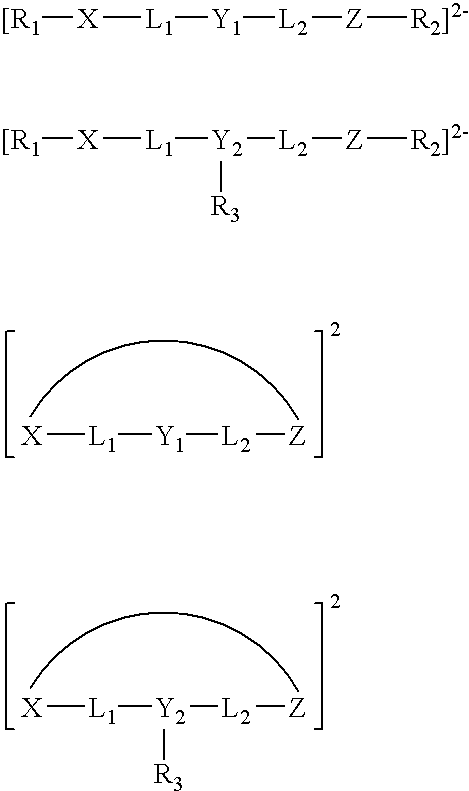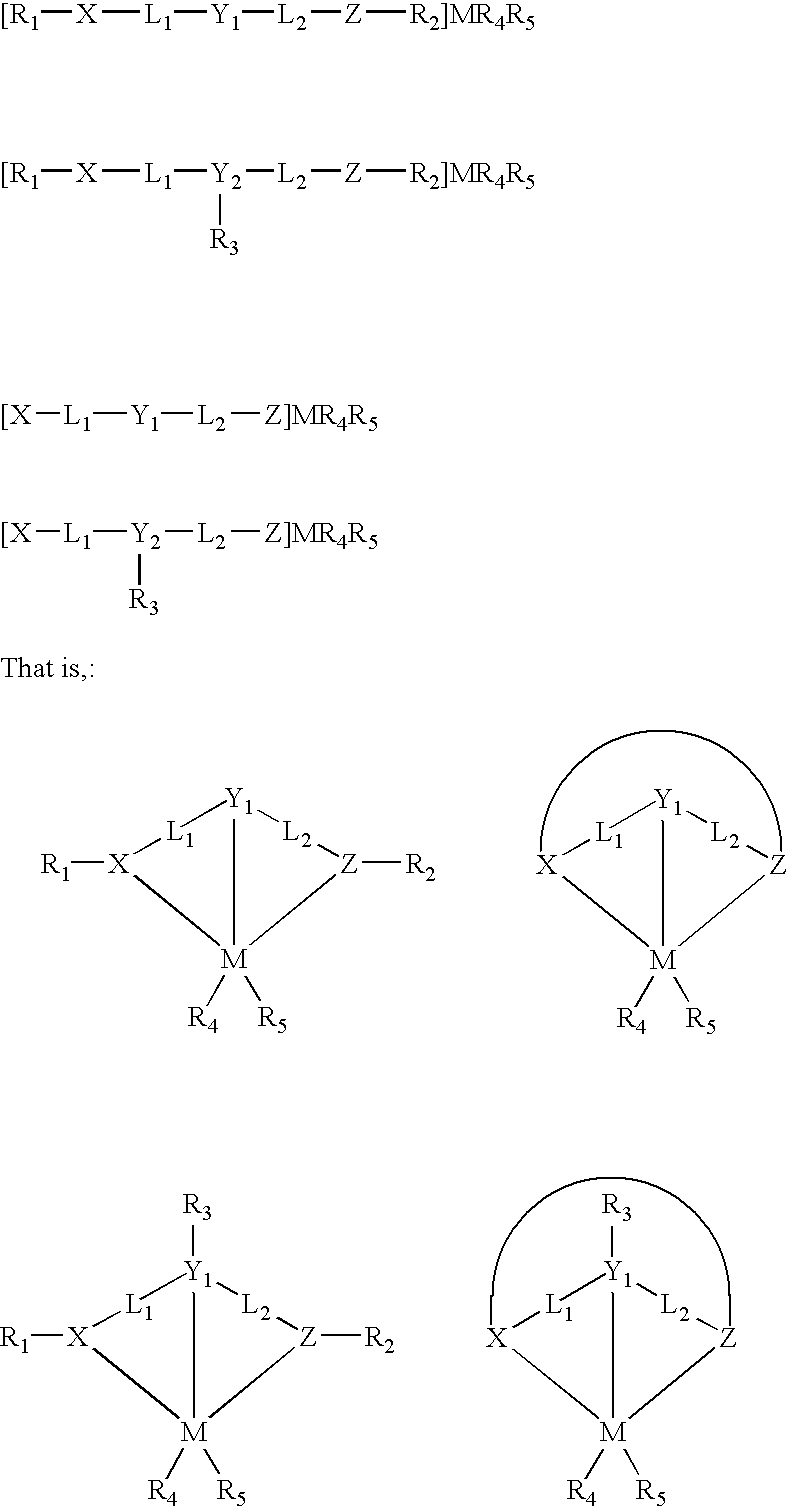Living olefin polymerization processes
a polymerization process and living olefin technology, applied in chemical/physical processes, group 4/14 element organic compounds, surgical adhesives, etc., can solve the problems of reducing the efficiency of block copolymer formation, inability to form additional homopolymer blocks to form block copolymers, and affecting the formation of polymers. , to achieve the effect of minimizing polymer weighing error, good block copolymer formation, and reducing the formation of polymers
- Summary
- Abstract
- Description
- Claims
- Application Information
AI Technical Summary
Benefits of technology
Problems solved by technology
Method used
Image
Examples
example 1
[0050][NON]Ti(NMe2)2 was synthesized as follows. LiBu (1.6 M in hexane, 4.2 mL) was added to a solution of H2[NON] (1.09 g, 3.36 mmol) in diethyl ether (30 mL) at −35° C. The mixture was warmed to room temperature and stirred for 4 h. A suspension of TiCl2(NMe2)2 (696 mg, 3.36 mmol) in diethyl ether (20 mL) was added to the solution containing the Li2[NON] at −35 ° C. The mixture was warmed to room temperature and stirred for 15 h. After filtration through Celite all volatiles were removed in vacuo. The residue was dissolved in a minimum of methylene chloride and layered with pentane. Cooling to −35° C. afforded orange crystalline solid; yield 864 mg (56%): 1H NMR (C6D6) δ 6.92 (m, 6H), 6.63 (m, 2H), 3.13 (s, 12H, NMe2), 1.28 (s, 6H, CMe(CD3)2); 13C NMR δ (C6D6) 150.93, 147.12, 124.37, 123.28, 120.29, 118.60, 60.20, 47.84, 32.43, 31.93 (m).
example 2
[0051][NON]TiCl2 was synthesized as follows. A Schlenk tube was charged with [NON]Ti(NMe2)2 (379 mg, 0.83 mmol), TMSCl (270 mg, 2.49 mmol) and toluene (10 mL). The solution was heated to 110° C. for 7 days, during which time the color of the solution turned black-purple. The volatile components were removed in vacuo and the residue recrystallized from methylene chloride / pentane at −35° C.; yield 286 mg (78%): 1H NMR (C6D6) δ 6.84 (m, 4H), 6.57 (m, 4H), 1.33 (s, 6H, CMe(CD3)2); 13C NMR (C6D6) δ 147.78, 142.14, 126.71, 124.41, 120.58, 118.86, 64.77, 30.57, 30.35 (m). Anal. Calcd for C20H14D12Cl2N2OTi: C, 54.43; H,5.89; N, 6.35. Found: C, 54.57; H, 5.96; N, 6.13.
example 3
[0052][NON]TiMe2 was synthesized as follows. A solution of MeMgCl in THF (3.0 M, 350 μL) was added to a solution of [NON]TiCl2 (230 mg, 0.52 mmol) in ether (10 mL) at −35° C. The color immediately changed from dark purple to orange and white solid precipitated. The mixture was warmed to room temperature and stirred for 15 min. All volatiles were removed in vacuo and the residue extracted with pentane (about 10 mL) over a period of about 5 min. The mixture was filtered through Celite and the pentane removed in vacuo to afford an orange red solid which was recrystallized from a mixture of ether and pentane at −35° C.; yield 162 mg (78%): 1H NMR_δ—6.87 (m, 6H), 6.56 (m, 2H), 1.60 (s, 6H, TiMe2) 1.42 (s, 6H, CMe(CD3)2); 13C NMR (C6D6) δ 148.39, 143.47, 126.1, 122.05, 121.42, 119.31, 64.58, 60.15, 31.37, 30.85 (m). Anal. Calcd for C22H20D12N2OTi: C, 65.98; H, 8.05; N, 6.99. Found: C, 66.07; H, 7.94; N, 6.84.
PUM
| Property | Measurement | Unit |
|---|---|---|
| polydispersity | aaaaa | aaaaa |
| temperature | aaaaa | aaaaa |
| size | aaaaa | aaaaa |
Abstract
Description
Claims
Application Information
 Login to View More
Login to View More - R&D
- Intellectual Property
- Life Sciences
- Materials
- Tech Scout
- Unparalleled Data Quality
- Higher Quality Content
- 60% Fewer Hallucinations
Browse by: Latest US Patents, China's latest patents, Technical Efficacy Thesaurus, Application Domain, Technology Topic, Popular Technical Reports.
© 2025 PatSnap. All rights reserved.Legal|Privacy policy|Modern Slavery Act Transparency Statement|Sitemap|About US| Contact US: help@patsnap.com



